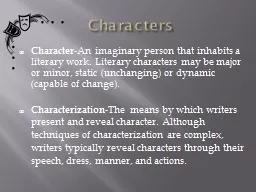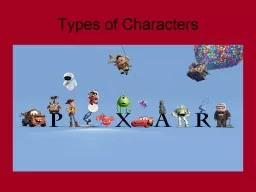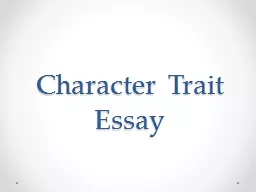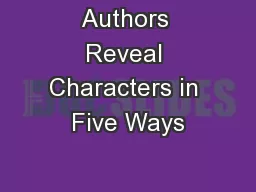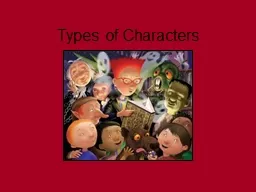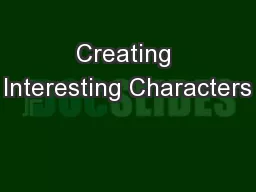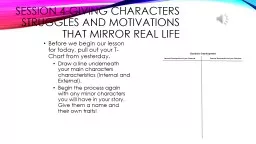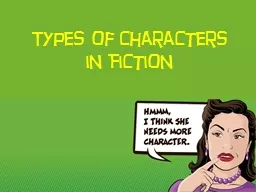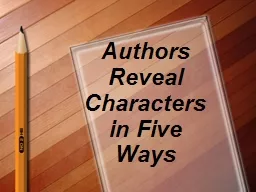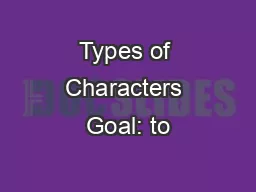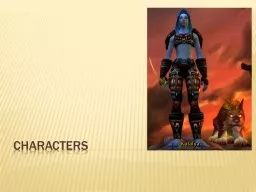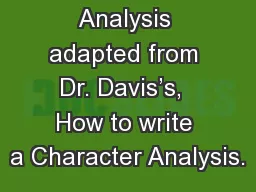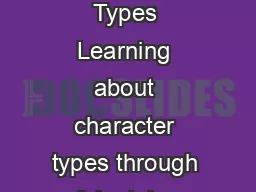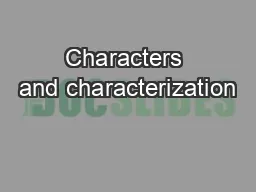PPT-Characters Character
Author : celsa-spraggs | Published Date : 2019-12-17
Characters Character An imaginary person that inhabits a literary work Literary characters may be major or minor static unchanging or dynamic capable of change Characterization
Presentation Embed Code
Download Presentation
Download Presentation The PPT/PDF document "Characters Character" is the property of its rightful owner. Permission is granted to download and print the materials on this website for personal, non-commercial use only, and to display it on your personal computer provided you do not modify the materials and that you retain all copyright notices contained in the materials. By downloading content from our website, you accept the terms of this agreement.
Characters Character: Transcript
Download Rules Of Document
"Characters Character"The content belongs to its owner. You may download and print it for personal use, without modification, and keep all copyright notices. By downloading, you agree to these terms.
Related Documents

